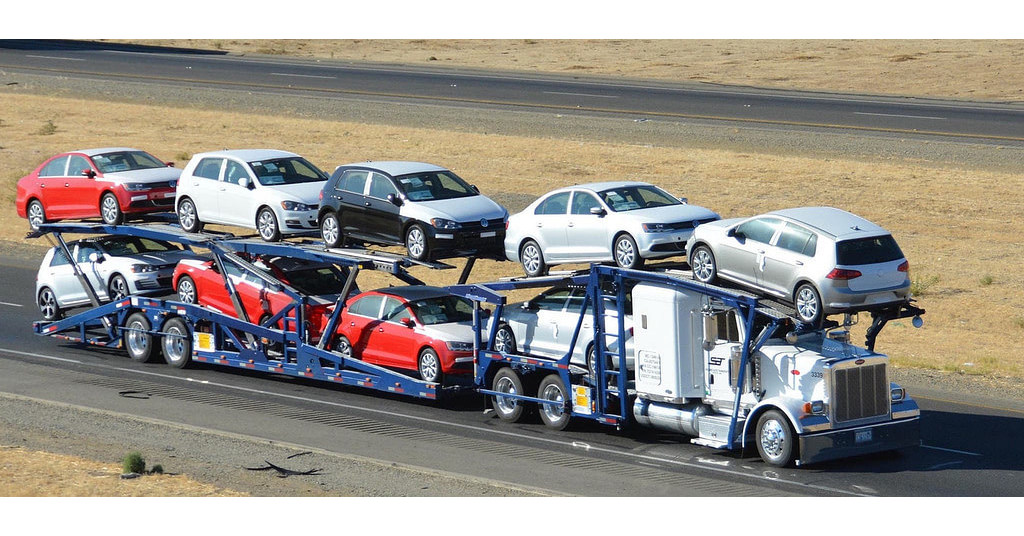In reference to international vehicle conveyance, protection represents a chief apprehension, notably throughout the port offloading and retrieval sequence. For the assurance of your car’s security throughout transit plus during handling at the port, ship it overseas. Fortunately, ports globally possess diverse protective conventions to guarantee vehicle security, yet some vital elements must still be contemplated to ensure your car’s secure arrival at its end point.
Within this thorough manual, we shall resolve the query: Is vehicle conveyance safe at harbors? At ports, we shall guide you through the security procedures that are generally operational. Transporting Cars can also guarantee the security of your vehicle from start to end, including protective measures.
Understanding Port Security for Vehicle Shipping
Ports, pivotal nodes in worldwide shipping, manage the yearly importation and exportation of millions of vehicles. Since vehicle drop-off within a port undergoes large regulation from both global and domestic statutes, it constitutes typically a fortified element in car exportation.
For vehicle preservation, ports generally feature a combination of physical, technological, and personnel-based security protocols that vary by port and region. These provisions safeguard vehicle protection against theft, damage, or else tampering during the wait for shipment.
Common Security Measures at Ports:
Surveillance Systems: Principal sizable harbors possess round-the-clock CCTV surveillance systems. They employ these systems to observe vehicle activity. This continual surveillance serves to guarantee vehicle security. Continuous surveillance is thus upheld.
Guard Services: Guard Services frequently utilizes security personnel for patrolling the premises. These individuals also scrutinize the designated unloading location. Authorized individuals are guaranteed vehicle availability.
Fencing and Barriers: Often, strong barriers delimit ports’ perimeters against entry, and only authorized personnel gain access within the drop-off areas.
Customs Inspections: Customs examinations might transpire before autos get boarded on a vessel. Vehicles are subject to the possibility of these inspections. This procedure serves also as a supplemental safeguard because it prevents contraband conveyance.
Cargo Tracking Systems: Numerous harbors employ RFID and GPS surveillance to supervise freight positioning, including automobiles. These Cargo Tracking Systems ensure the secure transit of cargo within the port.
What Can You Do to Ensure Your Vehicle’s Security?
Although ports usually offer protection, a vehicle possessor may act to better assure their auto transports securely. Listed herein are some proposals for the protection of your vehicle upon its arrival at the port.
- Document Your Vehicle’s Condition
Prior to your relinquishing your vehicle for transport, it’s vital that you record its present state. Concentrate upon indentations, abrasions, or impairment then capture footage or elaborate pictures of the present auto. Evidence for the condition is furnished if damage arises throughout car conveyance.
- Remove Personal Items
Your automobile has to be vacant prior to drop-off. Ensure that you extract all personal possessions. This stops larceny plus aids evasion concerning security or conceivable customs snags. Retaining personal articles nearby proves more secure, and certain harbors might institute statutes forbidding abandonment of valuables inside conveyances.
- Check for Vehicle Security Features
Prior to vehicular drop-off, assure alarm systems along with GPS trackers related to these protections have activation in your car. In the event that vehicles are briefly kept within a vulnerable port zone, such systems offer supplementary safeguards.
- Ask About Insurance
Contingencies or unanticipated incidents may transpire although ports are typically protected. Ponder securing conveyance of your vehicle so that you may safeguard your investment now. Verifying that your shipping firm features indemnity is important, and upon failure, inquire if they endorse alternatives.
Port Security and Shipping Companies
In the matter of ensuring vehicle security at the port, not all shipping firms function in an identical manner. A dependable shipping company selection must prioritize vehicle security. Shipping Cars exemplifies well-regarded organizations. These firms operate within dependable harbors observing stringent safety regulations. Your vehicle’s protection is guaranteed during the shipping process hence:
- Partnering with Secure Ports
Established logistics firms generally collaborate alongside regulated, fortified harbors when conforming to global maritime security protocols. Your car is well-protected during the shipping process because these ports are designed to safeguard vehicles.
- Experienced Personnel
Shipping companies utilize the services of adept experts who possess a comprehension of vehicle securement. They ascertain your vehicle is situated in a secure locale, correctly burdened, and shielded from potential perils.
- Tracking and Monitoring
Shipping Cars observes as well as oversees your vehicle throughout shipment. Have confidence that using this service your car is under vigilant surveillance, and you’ll be informed of the excursion’s advancement at each stage.
Are There Risks to Consider When Dropping off a Vehicle at a Port?
Certain hazards exist upon delivering a vehicle toward international shipping though most ports’ security protocols are quite strong.
Theft: Infrequent theft may occur at less reputable or poorly secured ports particularly. It’s vital to work alongside a reputable shipping company. For a valid rationale, secure ports are affiliated alongside this type of company.
Damage: There is constantly a likelihood that your automobile may incur impairment during transit. Management at the harbor might also impair it. Recording your vehicle’s condition in advance is important. This elucidates its importance. Suitable insurance coverage shall aid you in recouping expenses when damage transpires.
Impediments: Inspections by Customs, meteorological states, or auxiliary elements can sometimes precipitate impediments, though ports are generally secure. Selecting a dependable and streamlined logistics provider such as Shipping Cars curtails this hazard. This serves to guarantee prompt dispatches.
Conclusion: Ensuring a Safe Vehicle Drop-Off
In summary, strict safety measures such as monitoring, qualified staff, and fortified locations render ports safe for vehicle unloading. Recording your car’s state, eliminating private belongings, and procuring insurance are vital safeguards for a vehicle owner.
Shipping Cars will ensure appropriate handling of your vehicle throughout each stage from drop-off until ultimate delivery. Contact Shipping Cars now to ship your car safely as well as securely. You will encounter smooth overseas auto transportation once you proceed!



 What Are Import Duties, Exactly?
What Are Import Duties, Exactly?